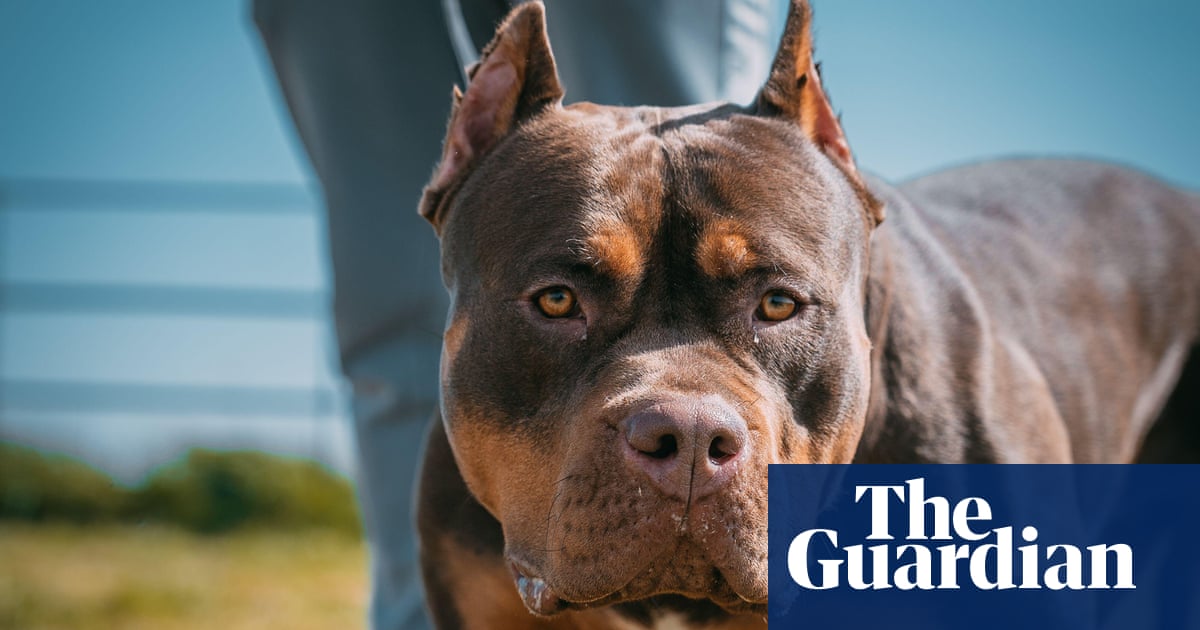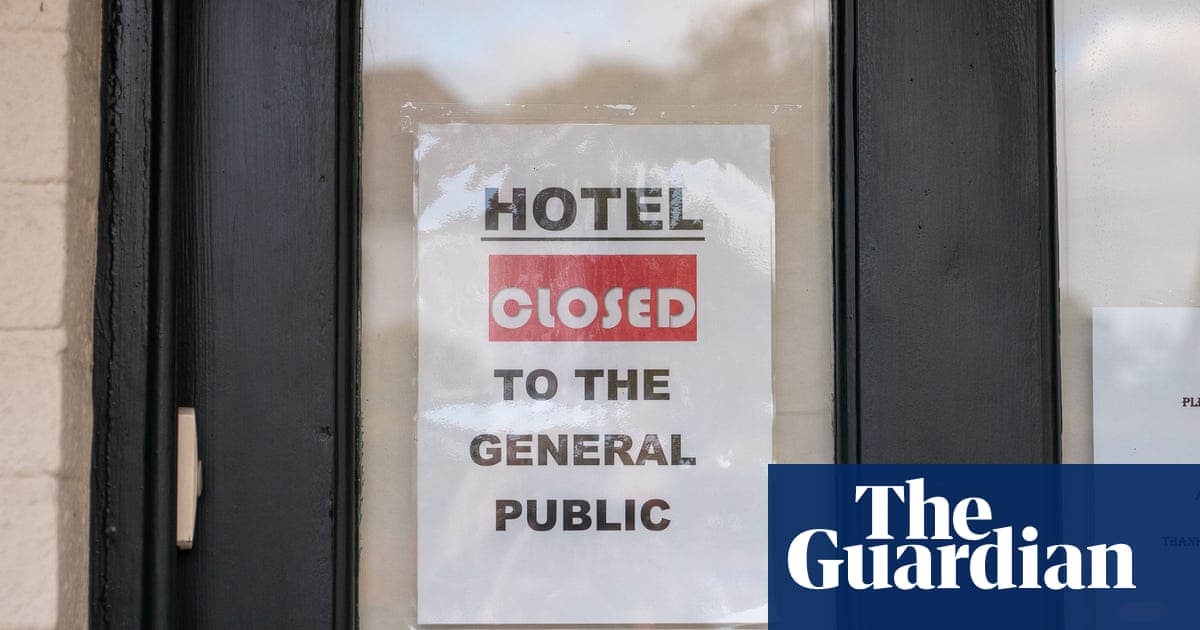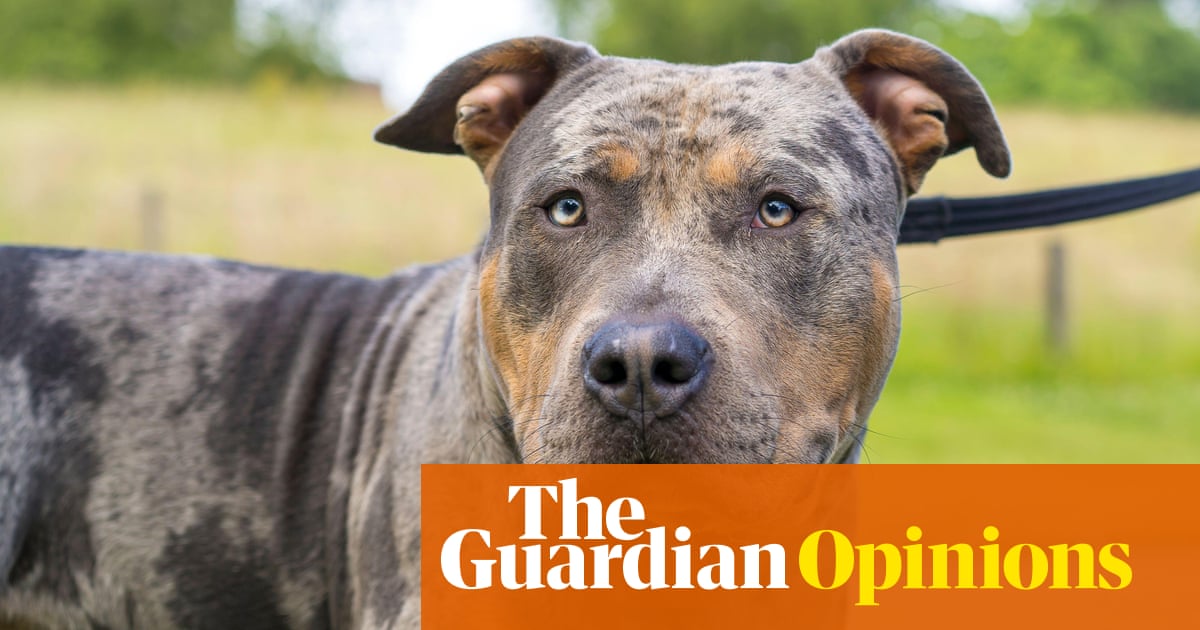
Good morning.
Dog attacks have been back in the news after a video of an 11-year-old girl being attacked by an American bully XL surfaced on social media, prompting the home secretary, Suella Braverman, to announce she has commissioned urgent advice on outlawing the dogs – a move criticised as too slow by family members of victims. In the disturbing footage, the girl can be heard screaming as people try to get her to safety. Two men who intervened were taken to hospital to be treated for their wounds.
The story caused an outcry for the breed to be banned, with critics pointing to figures that show bully XLs account for a high number of the fatalities in dog attacks. Because the breed is not recognised by Kennel Club in the UK, there is no clear figure for how many bully XLs are currently owned in the country, but it is slim proportion of the dog population. Yet in 2022, out of the 10 fatal dog attacks, six involved a bully XL – and earlier this month two bully XL dogs were shot dead after killing 24 pregnant sheep in north Wales.
Braverman has said the animals are a “clear and lethal” danger, but the Dog Control Coalition, a group that includes the RSPCA, Battersea Dogs Home and the Royal Kennel Club, have pushed back, insisting the problem is not the breed as a whole, rather the attacks are due to “irresponsible breeding, rearing and ownership”.
For today’s newsletter, I spoke to the Guardian’s Midlands correspondent, Jessica Murray, about how dangerous these dogs are and what can be done to stop the attacks. But first, the headlines.
Five big stories
Environment | The World Bank poured billions of dollars into fossil fuels around the world last year despite repeated promises to refocus on shifting to a low-carbon economy, research for Urgewald, a campaign group that tracks global fossil fuel finance, has found. The money, about $3.7bn (£2.95bn), went through a special form of funding known as trade finance, which is used to facilitate global transactions.
China espionage | MPs have vented their fury over a six-month silence that followed an aide operating at the heart of parliament being arrested on suspicion of allegedly spying for China. On Monday, some voiced concern that the gap meant they had been unable to take their own security precautions.
Health | Vulnerable eating disorder patients from England are being sent hundreds of miles from their homes to Scotland for treatment, as the number of available beds south of the border has dropped in two years. 84 patients were sent from England to Scotland between 2020 to May 23, costing a total of almost £9m.
Teaching | Only half of the required number of trainee secondary school teachers in England have been recruited as the academic year gets under way, analysis shows. The figures, obtained by the National Education Union (NEU) and the National Association of Head Teachers (NAHT), show ministers are on course to miss their recruitment targets by 48%.
North Korea | Kim Jong-un has arrived in Russia for a rare summit with president Vladimir Putin to discuss a possible deal to supply North Korean arms for the war in Ukraine. Kim’s armoured train arrived at Khasan station, Japan’s Kyodo news agency reported today, citing an unnamed Russian official source. The meeting is expected to be held this afternoon in Vladivostok, where Putin has already arrived.
In depth: ‘This type of dog is one of the main perpetrators of an increase in attacks, but some say it’s not that simple’
American bully XLs are a relatively new breed first thought to have been brought to the UK less than a decade ago. Originating in the US, they are closely related to the pitbull terrier, which was banned in the UK in 1991 as part of the Dangerous Dogs Act. They have been crossbred with English bulldogs, American bulldogs and American Staffordshire terriers to become even bigger and stronger, and became a recognised breed in 2013 in the US by the United Kennel Club. Because of its tough look, this type of dog has become something of a status symbol, with some owners using them as guard dogs.
West Midlands police said the dog involved in an attack in Bordesley Green in Birmingham on Saturday was a “crossbreed bully XL/Staffordshire bull terrier puppy”. The girl who required hospital treatment, Ana Paun, has said: “It was so scary. I was screaming. He let my arm go and then bit my shoulder. I want him [the dog] to go away, to die. I think all of the dogs, the bulldogs, all of them should be banned. The owner should be in prison because he never did anything, he just let the dog bite everyone.”
A documentary by the BBC’s Panorama uncovered links between the breeders of bully XLs and organised crime – sellers were using dogs to make huge amounts of cash and launder money, often at the expense of animal welfare. This trend seems to have waned in recent years but it has nonetheless coloured the image of bully XLs, especially as there is a widely held belief that a significant number of breeders are not as licensed as they should be, Jessica says.
The rise of dangerous dogs
As the name suggests, bully XLs are known for being muscular – they can grow to over 10 stone – and have hugely exaggerated characteristics. Their large frames mean that they can be incredibly dangerous, especially to other animals and children. But it’s not just bully XLs that are responsible for injuries sustained because of a dog attack.
Over the last two decades, the number of adults that needed to go to the hospital because of a dog bite has tripled. The problem has only been compounded by the boom in dog ownership during the pandemic – the dog population in the UK rose by at least 10% during that period, although that does not account for the rise in bites. The number of dog bites were rising before the pandemic, but a children’s hospital in Liverpool said that the number of children attending A&E for dog bites tripled during the first Covid lockdown. Some experts say that the reason is that lockdown puppies that received minimal training and socialisation with other dogs are now full size and are walking around in a post-lockdown world. In the case of the bully XL, the consequences of a lack of training and mistreatment are particularly dangerous.
---
Zoe Williams: Should American bully XLs really be banned?
---
There were 10 fatal attacks last year – six of them involved bully XLs. When you consider that these dogs make up a slim percentage of the overall dog population, it is not surprising that a lot of people are worried about the safety of these dogs in particular.
“The data is really starting to paint this picture that perhaps this dog is one of the main perpetrators of this increase in dog attacks and maybe something should be done about it,” Jessica says. “Though, some would argue, that it’s not quite as straightforward as that.”
What owners say
Jessica interviewed a number of bully XL owners who are distressed by the news that the breed could be banned: “They cannot comprehend that there is something about their pets, who they have always known to be calm, placid and well trained, which makes them inherently more violent or aggressive than any other dog.”
And that is perhaps what is at the heart of this heated debate: are bully XLs genetically more prone to aggression and violence, or is it primarily down to the owners and how well they have trained and treated them?
Some of the leading animal welfare organisations including the RSPCA along with the Kennel Club argue against breed-specific legislation because they think dogs should be judged on an individual basis and not by breed – but many push back and say that even if attacks are largely down to how the owner trained their dog, how are people meant to differentiate on a daily basis which dog is dangerous and which is well trained.
What the science says
There is not yet clear scientific consensus as to which breeds of dog are consistently more aggressive. “What we do know is that within each breed there are aggressive dogs,” Dr Carri Westgarth told the Guardian. She noted that the important thing to look out for are breeding lines because “you can trace back breeding lines of aggressive wild dogs that have a higher tendency to become aggressive”. And a lot of the bully XLs in the UK descend from dogs that are known to be violent, according to a pressure group Bully Watch, who are pushing to ban the breed.
The key question for a lot of people, Westgarth says, is: “If a dog does get aggressive, how likely are they to cause significant damage?” If a chihuahua becomes aggravated and tries to bite a person or another dog, chances are the injury will not be serious. When a dog which weighs more than 60kg and – when on its hind legs – could be eye level with an adult becomes aggravated, the consequences are different.
One of the case studies Jessica highlighted was not a mistreated or particularly poorly trained bully XL, but a family pet that one day just “snapped”, saying: “Maybe that stems back to something that happened to the dog when it was much younger before it joined this family or maybe it is something in the genetics.”
Minimising attacks
Until recently, the UK government had no plans to ban bully XLs, but therecent attacks have shifted feeling in Westminster. The home secretary, Suella Braverman (above), has commissioned urgent advice on banning bully XLs.
Braverman’s intervention was criticised by Emma Whitfield, whose son Jack Lis was fatally wounded two years ago by an American bully XL dog. Writing on X, previously known as Twitter, Whitfield said: “It’s crazy how this video has gone viral and now politicians are coming out of the woodwork saying how bad it is. Where were you when my son was killed? …. If you’re going to do something, please do it. Stop pussyfooting around the ‘breed neutral’ bull crap and do something.”
Such a ban is within the government’s power, though it would probably face opposition from many animal rights organisations, which still stand against breed bans – the “breed neutral” stance Whitfield refers to.
Others are calling for stricter breeding licences, more regulation on imported pets and mandatory council-funded pet training courses.
It is important to note that we have been here before. There were similar concerns with the pitbull terrier before it was banned in the early 1990s and while the ban has stopped that specific breed of dog from attacking people, it did not stop bites from other breeds of dogs occurring. For that reason, many believe that bans are not a long-term solution if we want to stop fatal dog attacks. There is always another “dangerous” breed ready to take its place.
What else we’ve been reading
Civil servants are meant to keep their personal political views secret, but a former chief Foreign Office civil servant has revealed that he told colleagues and ministers that he voted against Brexit – at the time of the 2016 referendum. Rupert Neate, acting First Edition editor
There have been so many potions and elixirs that all propose to look after or fix your vaginal microbiome over the years (looking at you, Gwyneth Paltrow). Mabel Banfield-Nwachi looks at whether these products (above) actually do anything and why they are so popular. Nimo
If you’re a man, and you find clothes shopping boring you’re not alone. Some guys are switching to womenswear in search of more interesting cuts and shapes. “[With menswear] there’s no subtlety … that you might want to accentuate your body in some way,” one convert tells Charlie Teasdale. Rupert
Tucker Carlson was once the face of Fox News. Now he uploads 40-minute videos on to Twitter, where he tries to revive debunked conspiracies about Barack Obama smoking crack and having sex with a man many years ago. Adam Gabbatt’s analysis tracks his rapid descent. Nimo
Strictly judge Craig Revel Horwood reveals in an interview with Emine Saner that he had been “completely homophobic” until he discovered dance and won the acceptance of other older gay people. “I was traumatised at school, but dance released that.” Rupert
Sport
Football | The resignation of Spanish FA chief Luis Rubiales has been “hailed as win for feminism,” Ashifa Kassam reports from Madrid. However, many still have questions about the drawn-out process that led to Rubiales quitting.
---
Tennis | Novak Djokovic has vowed to “keep going” after winning his historic 24th grand slam at the US Open on Sunday. “I don’t want to leave this sport if I’m still at the top, you know, if I’m still playing the way I’m playing,” the 36-year-old said. Andrew Lawrence has written here about the enduring champion.
---
Cricket | Durham were promoted to Division One on Monday, without even picking up a bat. The moment came as Leicestershire were dismissed for 108 by Sussex, collecting not a single batting point in the process, which left them unable to catch Durham – who now need just five points from their last two games to go up.
The front pages
The Guardian leads with “NHS: alarm over exodus of medical students”. In other health-related news, the Times reports “1 in 3 female surgeons assaulted by a colleague”, based on the results of a new survey. The i says “State pension boost on way for millions – but no tax cuts”.
The Telegraph carries comments from business secretary Kemi Badenoch, under the headline “Britain ‘cannot afford to cut ties with China’, despite spying row”. The Mail follows the same story with “MPs told: Don’t mention the ‘spy’!”.
The Financial Times leads with “Wilko to close remaining 300 stores with 12,500 job losses as rescue fails”. The Mirror has a front page interview with the victim of a dog attack, and the headline “It was on me … I just felt panic, I was screaming”. Finally, the Sun has a “Soap Exclusive” with “Brian: I’m out of Enders”.
Today in Focus
The concrete crisis: is Britain falling apart?
Reinforced autoclaved aerated concrete (Raac) is a building material used widely in the postwar years that is weaker and cheaper than traditional concrete and prone to collapse when exposed to moisture over a long period. Its need to be replaced has been widely known and accepted but the structural failures of parts of buildings previously thought safe has caused the government to drastically revise its advice.
Peter Walker, the Guardian’s deputy political editor, tells Nosheen Iqbal that the crisis could barely be worse for the government: it highlights specific failings in the way budgets and infrastructure projects have been managed over the lifetime of the Conservatives’ time in power – and it is emblematic of a country literally falling apart in some places.
Cartoon of the day | Ben Jennings
The Upside
A bit of good news to remind you that the world’s not all bad
Khadija Saye, a young Gambian-British photographer, was one of the 72 people who died in the Grenfell Tower fire in London. Just months before the 2017 fire, her work was exhibited at the Venice Biennale, where she met Turner prize-winning artist Chris Ofili.
“She had this really radiant presence,” Ofili recalls in an interview with Gary Younge. “She made quite extraordinary, mystical, alchemic self-portraits and works fusing her history and the history of photography.”
Now Saye’s image (above) hovers high on a wall in the Tate Britain in a new piece by Ofili that he hopes will “hit people in the gut”.
Sign up here for a weekly roundup of The Upside, sent to you every Sunday
Bored at work?
And finally, the Guardian’s puzzles are here to keep you entertained throughout the day – with plenty more on the Guardian’s Puzzles app for iOS and Android. Until tomorrow.
Quick crossword
Cryptic crossword
Wordiply












